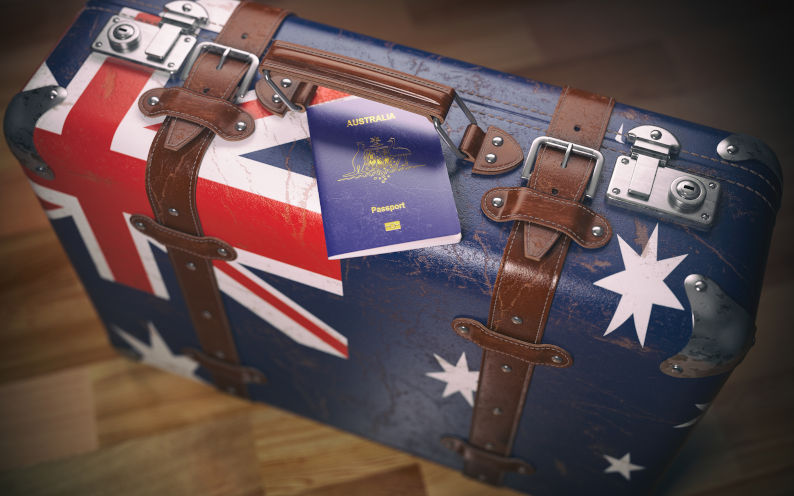If I were the Minister for Immigration policy in the next parliament
June 12, 2022
Why do business lobby groups prefer governments recruit skilled migrants?
At a recent banking conference, business lobby groups were quick off the mark to demand an increase in skilled migration from the new Albanese Government.
One participant at the conference is reported to have said the labour shortage problem is strangling Australian business.
Skilled Temporary Entry
Whenever modern Australia has faced severe skill shortages, we have seen use of the skilled temporary entry visa the old Sub-Class 457 and now Sub-Class 482 rise strongly and then fallback when the labour market weakens.
This visa is managed on a demand driven basis it is unaffected by any limit on the number of places in the permanent migration program. It can usually be granted much more quickly than a permanent skilled visa and hence has traditionally been favoured by Australian employers.
Employers do not need to wait for any action by the Australian Government. After a period of employing these temporary skilled migrants in Australia, employers can subsequently sponsor them for permanent migration.
Chart 1 shows the number of skilled temporary visa holders in Australia has been steadily declining since 2014. In June 2014, there were over 195,000 skilled temporary visa holders in Australia. At end March 2022, there were just under 96,000 skilled temporary visa holders in Australia.
Source: data.gov, skilled temporary entry
The initial decline in 2014 was due to a sharp weakening of the labour market when the Abbott Government tried to significantly tighten fiscal policy the infamous 2014 Budget which was to address Labors debt and deficit disasters.
The decline accelerated when Peter Dutton abolished the old Sub-Class 457 visa and replaced it with the new Sub-Class 482 visa.
This was not as some have suggested just a name change. Dutton made Australias skilled temporary visa internationally uncompetitive in a world where competition for skilled migrants will only intensify.
It was a classic case of Dutton again shooting Australia in the foot.
The decline in skilled temporary visa holders in Australia continued during the pandemic even though the Morrison Government said it was continuing to allow entry of skilled visa holders who were needed during the pandemic (eg nurses).
With international borders re-opening from December 2021 and business lobby groups crying out for more skilled migrants, it would be expected that use of skilled temporary entry would rise quickly. But offshore skilled temporary visa grants are growing only very slowly (see Chart 2).
Source: data.gov, skilled temporary entry
While 9,825 offshore skilled temporary visas were granted in the period January to March 2022, this is still well down on past years and is around half the March quarter peak of over 19,000 such visas granted in the March quarter of 2011-12.
Skilled temporary visa grants in 2021-22 to end March 2022 was 20,988 and is unlikely to be much above 35,000 for the full year compared to 72,532 in 2012-13.
Astonishingly, more skilled temporary entrants left Australia in April 2022 than arrived.
Given the reported extent of skill shortages, Australian employers are simply not taking up the opportunity to recruit skilled temporary migrants from overseas that might be expected.
While this may partly be due to the changes to this visa that Dutton made, that is not a sufficient explanation.
Business lobby groups would do well to guide their members on how to use skilled temporary entry to recruit the skilled migrants they need, perhaps with the assistance of recruitment firms or migration agents.
Increasing the Skill Stream of Permanent Migration
But rather than increase usage of skilled visas that are already available, business lobby groups continue to pressure government to increase the skill stream of the permanent migration program.
The CEO of the Australian Chamber of Commerce, Andrew McKellar, is reported to have said its quite achievable to increase the intake above that level, up towards 200,000 as weve said over the next couple of years.
It is not clear if McKellar meant increasing the overall migration program to 200,000 or increasing just the skill stream to 200,000.
Lets assume he meant the more modest target of an overall migration program of 200,000 which would still be the largest in our history.
Chart 3 shows the permanent migration program since the mid-1980s. It highlights the cut in the program after the 1990 recession and the increase in both the migration program and the skill stream under the Howard Government from around 2001 before the program was reduced to around 160,000 per annum by Dutton and Morrison.
The sharp fall in the skill steam to under 80,000 in 2020-21 was designed to make room for the Governments decision (under legal and political pressure) to clear the massive backlog of partner visas that Dutton had illegally engineered. This will be confirmed in a forthcoming audit of partner visa processing.
Source: Historical Migration Statistics - data.gov
With the partner visa backlog now cleared in 2021-22, to deliver a migration program of 160,000 in 2022-23 would require the skill stream to be increased by around 30,000 to an overall level of 110,000.
An overall migration program of 200,000 would require a skill stream of around 150,000 or an increase of 70,000 over the original planning level for 2021-22. What business lobby groups dont explain is how they want that increase to be delivered!
Given the unwillingness of employers to significantly increase use of temporary employer sponsored visas which are the main feeder group for permanent employer sponsored visas, there would be only two possible ways to deliver such an increase:
- State/territory governments significantly increase the number of migrants they nominate, including a shift to nominating offshore migrants who do not have a skilled job in the relevant jurisdiction or a contract for a skilled job in the jurisdiction; and/or
- Government reduces the passmark for the points-tested skilled independent category. While that is feasible given the current high passmark, a very large reduction in the passmark would be needed to deliver the numbers business lobby groups want.
Business lobby groups appear to prefer governments bring in skilled migrants through these mechanisms rather than their members recruiting the skilled migrants directly from overseas. That is odd given business lobby groups also argue for smaller government and for governments to get out of the way and let them run things.
If governments bring in lots more independent skilled migrants, employers can pick and choose from the smorgasbord of onshore skilled migrants that then opens up. If large numbers of these skilled migrants dont get a skilled job, business lobby groups will complain that governments are bringing in people with the wrong skills.
This approach shifts risk away from employers who can avoid the costs and employer obligations associated with employer sponsorship and push these costs and risks onto governments and the skilled migrants themselves, noting that the skilled migrants have no access to social support for four years.
If there is a sudden downturn in the labour market, the risks become extreme.
But of course business lobby groups will never admit to this strategy of shifting costs and risks.




